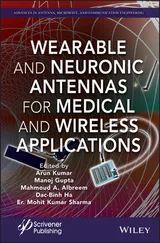1 Agreement (e.g., thank you, I love it! );
2 Nonagreement (e.g., it’s just an old shirt ); or more unusually,
3 Other interpretations (e.g., an offer such as would you like to borrow it? ).
In Chinese, however, Chen (1993) suggests that Rejection or Nonagreement is a far more common response. From a sociopragmatic perspective, compliments in American English tend to appear in interactions between people of equal status such as between friends or colleagues, whereas in Japanese, speakers are more likely to compliment people of a higher social status than themselves. Finally, pragmalinguistically, Chen (2010) suggests that compliments in American English typically take the structural form NP is/looks really ADJ ( Your blouse looks really beautiful ), or I really love/like NP ( I love your car ) (p. 79), while in Arabic, a common response is a formulaic utterance of offering, for example, I proffer it to you; It’s all yours (p. 93)
As we noted in Chapter 2much of the research in SLA has focused on examining how these differences are learned in a second language, and a number of syntheses of interlanguage speech act studies (Kasper & Rose, 1999; Plonsky & Zhuang, 2019; Taguchi, 2015; Takahashi, 2000) give us a clear picture of the development of this field. Early studies were typically experimental in nature and used elicited data such as dialogue completion or roleplays; see Chapter 9for a detailed discussion of these designs. One effect of this line of research noted by Kasper and Rose (1999) is that low-proficiency learners may not have sufficient overall language competence to engage in these kinds of language activities; thus, primarily intermediate and advanced learners are investigated. A consistent finding across these studies is that similar to native speakers, learners control a wide range of strategies with which to enact speech acts; for example, they use both direct and indirect strategies and they understand the necessary components for effective speech act performance such as offering repair in the case of apologies. In contrast, their pragmalinguistic choices differed from native speakers. This would not be unexpected as the language used in these contexts may be idiomatic in nature (e.g, got a light? ). Blum-Kulha and Olshtain (1986) found a bell-shaped development curve in the use of modality markers such as hedges, supportive moves, or intensifiers (see Section 7.1, for discussion) used with speech acts where they were initially under-supplied at lower-proficiency levels, and then oversupplied at higher levels before they reached a more nativelike distribution. The use of modals also developed over time from an overuse of (I) want or bare imperatives (e.g., give me ) toward more nativelike uses of may (I), would (you) and could (you) (Hill, 1997).
Later research focused on how sociopragmatic and pragmalinguistic features might best be taught. Overall, studies showed a clear, positive effect for explicit intervention suggesting that Non-Native Speaker (NNS) pragmatic competence can be positively impacted through classroom instruction even in EFL environments. For example, Eslami-Rasekh et al. (2004) administered a multiple-choice awareness test to both a control and treatment group of Iranian learners following 12 weeks of metapragmatic instruction in requests, apologies, and complaints for the treatment group, and a significant difference in performance was found between the two groups. Rose and Ng (2001) report a similar finding for deductive instruction of compliments and suggest that it may be particularly effective for increasing learners’ sociopragmatic knowledge. These findings regarding the effectiveness of explicit treatments of speech acts have been further confirmed by the most recent studies that have come to similar conclusions particularly within EFL contexts (Eslami-Rasekh, et al., 2015; Nguyen et al., 2015; Sarab & Alikhani, 2016; Zaferanieh & Eslami-Rasekh, 2016). Investigation of the effectiveness of different instruction techniques also continues to expand. Most recently, Taguchi and Kim (2016) investigated the potential benefits of task-based teaching and collaborative dialogue between students. Following instruction, two groups of EFL learners in South Korea developed their own request dialogues: One group developed them collaboratively in pairs and the other group worked on them individually. Language produced during the collaborative task and in the immediate post-test showed an advantage for the collaborative group; however, in a delayed post-test conducted one month later both groups performed alike.
3.3.1 Speech Acts in the TESOL Classroom: Materials
Having assessed through ongoing research that instruction in pragmatics is both possible and meaningful, we can look at how this is typically addressed in classroom materials. Although traditionally the teaching of pragmatics has been underrepresented in TESOL textbooks, the exception is the presentation and practice of speech acts which are often taught under some form of the idea of “the functions of English” (e.g., Jones, 1981).
Speech acts that are typically represented are many of those we have covered in this chapter such as requests, apologies, complaints, suggestions, and so on. However, when we look more closely at pedagogical presentations, we find that they often suffer from our perceptions of what we think we do rather than what we actually do. This applies to both the acts themselves and the way in which we express them. Wolfson (1990), for example, describes an early study focused on invitation-giving (Wolfson et al., 1983) in which “native speakers of American English described themselves as using forms which were rarely or never heard in observations of actual interactions, and expressed strong disapproval of forms which they were heard to use all the time” (p. 2). Boxer and Pickering (1995) focused on the presentation of direct complaints in textbooks (e.g., Excuse me, we’ve been waiting here for 15 minutes, are we ever going to be served? ) vs. indirect complaints (ICs). ICs are typically used as a form of commiserating or complaining between interlocutors (including strangers) in which a negative evaluation is expressed about someone or something that is not the addressee’s fault. For example:
(18) Two female graduate students in a departmental library.
A: They never have what you need in here. You’d think they’d at least have the important books and articles.
B: They didn’t have what you were looking for?
A: No.
B: That’s typical. (Boxer & Pickering, 1995, p. 45)
They are far more common than direct complaints in daily interaction and are often used as a form of relationship-building or phatic communion (see Functionalism Section 6.1.1) between speakers; thus, they are an important area for language learners. Despite this, Boxer and Pickering found a universal presentation of direct complaints across the seven texts that they surveyed and only tangential treatment of reactions toward attitudes or emotions. Vellenga (2004) noted that not much had changed in a decade. Speech act presentations in ESL and EFL textbooks remained problematic comprising decontextualized examples with little or no discussion of register and formality and a continued focus on speech acts that may be less relevant to learners. With regard to direct complaints, for example, she notes “imagine the pitfalls for a population of learners who think direct complaints are the norm in English!” (p. 16). And nearly two decades later, investigations of the presentation of speech acts in EFL texts for Vietnamese students (Nguyen, 2011) and Chinese students (Ren & Han, 2016) reported the lack of a justification as to when and how speech acts were introduced in the texts and very traditional pedagogical presentations that continued to lack contextual and metalinguistic information.
Читать дальше












